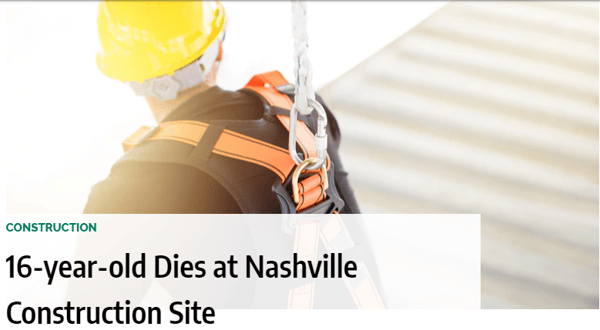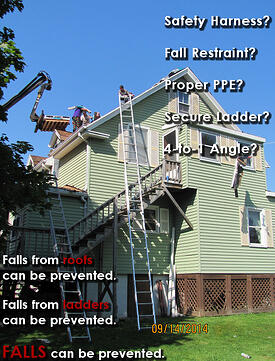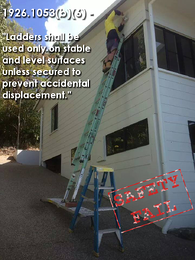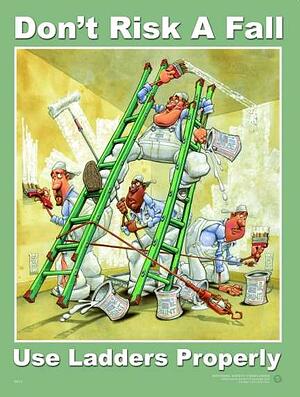



Tags: fall protection in construction, Fall protection training, OSHA fall protection
Do you need to reach something higher than chest/eye level? Do you need a ladder? Do you know how to choose the correct one suited for the task at hand? These preliminary questions were brought up in a previous article I wrote on the subject of ladder safety where I covered some basic information. But seeing as falls from ladders still make up nearly a third of the deaths in the construction industry every year, this article today will cover how to avoid injuries by following some ladder safety tips, ladder "do's & don'ts", and some requirements for training.

Deaths resulting from ladder falls are preventable, falls from ladders can be avoided and many lives can be saved each year simply by following safe work practices. Specifically, falls from portable ladders (step, straight, combination and extension) are one of the leading causes of occupational fatalities and injuries. As said before, these are preventable. A ladder is a tool just like any other, it is made as safe as possible and if used within the scope of its instructions, no harm should befall you. Be sure to take the time to properly understand how to select, set up, and move about on a ladder safely with these safety tips.
DO: Maintain a 3-point contact (two hands and a foot, or two feet and a hand) when climbing/descending a ladder.
DO: Face the ladder when climbing up or descending.
DO: Keep the body inside the side rails.
DO: Use extra care when getting on or off the ladder at the top or bottom. Avoid tipping the ladder over sideways or causing the ladder base to slide out.
DO: Carry tools in a tool belt or raise tools up using a hand line. Never carry tools in your hands while climbing up/down a ladder.
DO: Extend the top of the ladder three feet above the landing.
DO: Keep ladders free of any slippery materials.

DON'T: Use a ladder on soft ground or unstable footing.
DON'T: Exceed the ladder’s maximum load rating.
DON'T: Tie two ladders together to make them longer.
DON'T: Ignore nearby overhead power lines.
DON'T: Move or shift a ladder with a person or equipment on the ladder.
DON'T: Lean out beyond the ladder’s side rails.
DON'T: Use an extension ladder horizontally like a platform.
DON'T: Place a ladder on boxes, barrels, or unstable bases.
Before using a ladder, check it carefully to ensure there are no visible defects and that it is in good working condition. Check the ladder according to the manufacturer’s instructions. Maintain and store the ladder according to the manufacturer’s instructions.

Employers must train all employees to recognize hazards related to ladders and stairways, and instruct them to minimize these hazards. For example, employers must ensure that each employee is trained by a competent person in the following areas, as applicable:
Tags: fall protection in construction, fall safety, ladder safety, osha general industry training
In order to answer this simple question, first you must ask yourself the following questions (as indicated by OSHA):
According to OSHA, if the answer to any of these questions is a "Yes," then you may want to revisit the idea and consider using something other than a ladder (scissor lift, scaffolding, etc.)

 Maintain three points of contact with the ladder at all times.
Maintain three points of contact with the ladder at all times.Tags: fall protection in construction, fall safety, ladder safety, general ladder safety, osha general industry training, osha fall protection general industry
© 2025. Safety Training Services. All Rights Reserved.
8516 Henry Street, Highland, IN 46322 | (877) 724-2744